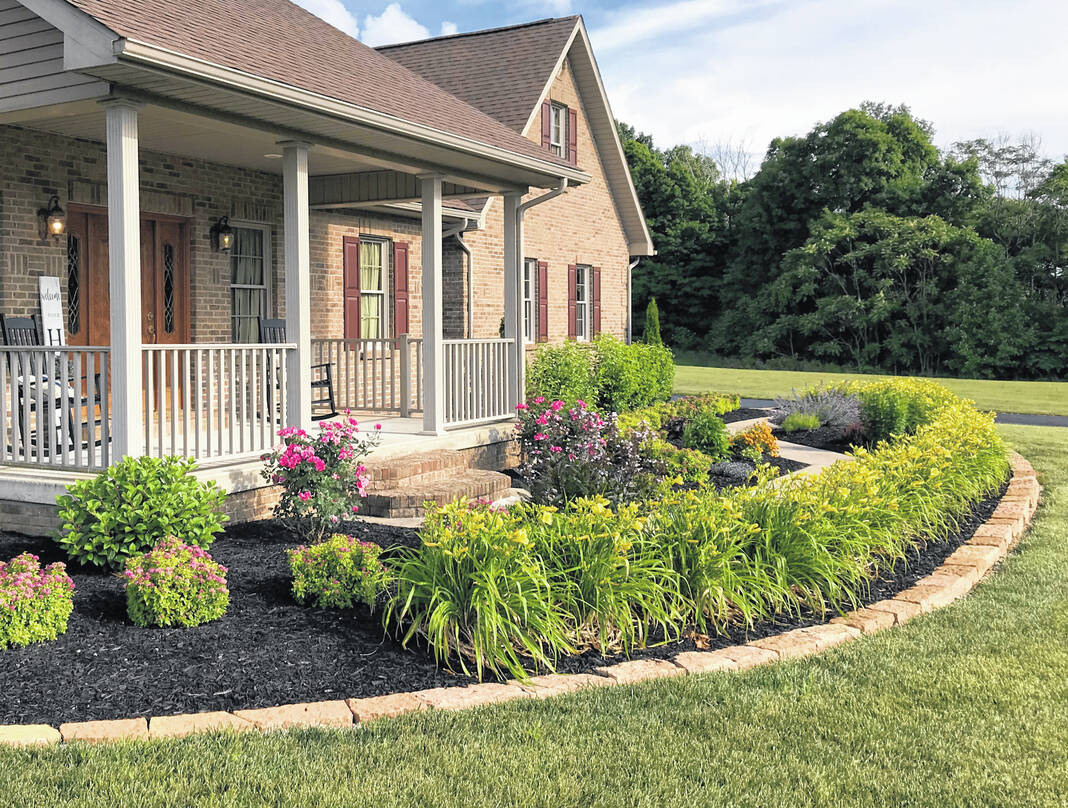

You may have noticed that the easiest landscape beds to maintain are those surrounded by concrete. For instance, most homes have a concrete walk between the driveway and the front door. This arrangement creates a space for landscaping, surrounded by pavement and the front porch or exterior wall. Most often this space is filled with shrubs and flowers. Because it’s surrounded by concrete walls and paving, lawn grasses can’t invade the mulched area, and creeping weeds have a harder time getting established.
Aside from this tidy garden plot, most foundation beds are surrounded by lawn. Generally, the soil quality is better in the foundation beds than in lawn areas, so grass and weeds naturally try to invade the landscape beds, causing them to shrink. Or, in many cases, the beds were too small to fit the shrubs once they mature, so shrubs overhang the lawn, making mowing difficult. This is a sloppy look. Maintaining a neat appearance is hard work.
The solution is to install some sort of physical barrier, called bed edging. This could be a thin strip of metal or vinyl, imbedded in the ground around the edges of beds, or a more substantial border of stone, brick, or concrete blocks.
We’ve tried various types of metal or vinyl strips, held in place with stakes, and/or partially buried so that the weight of the surrounding soil holds them. Most often this type of edging is pushed up out of the ground by seasonal freezing. It’s also difficult to install unless the ground is perfectly level and flat.
We prefer bed edging of natural stone, or wall block, which can follow the contours of sloping or uneven bed edges. Here’s how to install this type of hardscaping:
First, make sure that the beds you’re surrounding are large enough for the plants to grow to their full size. Use stones or blocks that are large and heavy enough to stay put, and install them at least half underground and half above ground level. To do this you must dig a trench almost as deep as the height of your blocks, and at least six inches wider. At this point it’s a good idea to sprinkle some Preen in your trench, to discourage weeds. Weed barrier fabric in the bottom of your trench helps even more.
Using pea gravel or #8 clean limestone, make a bed at the bottom of your trench, at least an inch or two thick. This gravel bed makes it easy to lay the stones evenly, and helps keep the stones from settling over time. Try to keep any garden soil out of your work, because you’ll have more weeds if dirt gets mixed with your gravel.
Once you’ve laid the edging stones end-to-end on the bedding gravel, adjust them so that the tops are nice and level from front to back and side-to-side. Then add more gravel, front and back, and between the stones if there are gaps, to lock the stones in place. Fill the trench with clean gravel up to ground level.
There should be at least four inches of gravel showing in front of your edging. This makes a “trim strip” so that you don’t need to hand-trim or “weed-eat” along the edging each time you mow. Ideally your edging is low enough (two to three inches above ground) that you can hang the mower deck over it, making hand trimming unnecessary. If grass or weeds invade your trim strip you can simply spray along the edging with Roundup.
Installing this type of hardscape edging is a serious project that will take time, effort and money, but it will repay you over years of time by making your weekly maintenance much easier. It also looks nice. If you do it you’ll be glad you did.
Steve Boehme is a landscape designer/installer specializing in landscape “makeovers.” “Let’s Grow” is published weekly; column archives are online at www.goodseedfarm.com. For more information call GoodSeed Farm Landscapes at (937) 587-7021.



